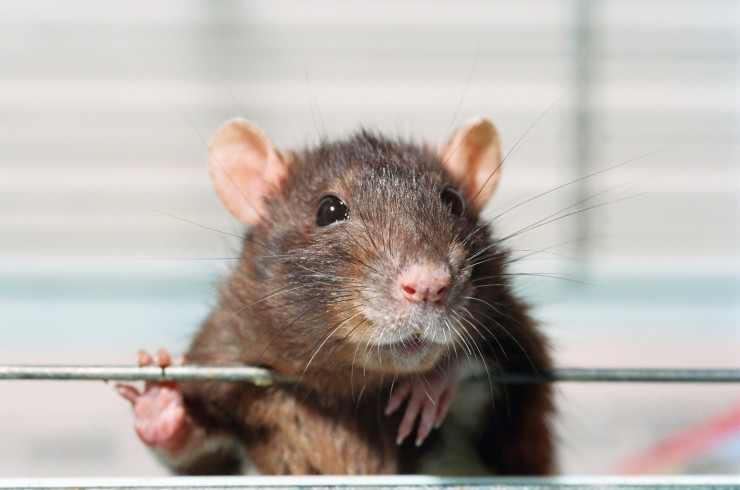

Although there are a number of diseases in rabbits, with the most common ones being myxomatosis and viral haemorrhagic disease, there is one condition that is also a killer of rabbits. The condition is called Encephalitozoon Cuniculi.
Encephalitozoon Cuniculi or as its better-known E. cuniculi is a protozoan parasite (this means it is a single cell organism) that lives in the body cells of its host. E. cuniculi does not just affect rabbits but can cause problems in many other mammals and birds.
It is thought in Britain that as many as 52% of rabbits have been affected or exposed to E. cuniculi, although accurate figures are very hard to determine in this condition. Some rabbits may show only very limited signs of the infection.
Research shows that the infection is carried by spores that are shed in urine. It is likely that the majority of rabbits are infected at a very early age from their mother from ingestion of contaminated urine.
One month after infection, the rabbit will be shedding spores of their own, in the urine. The rabbit will continue to shed the spores for up to three months and probably on and off for life.
The spores have been found to survive in the environment more than a month.
When the rabbit is first infected, the parasite finds its way into the intestines. Once in the intestinal tract it goes on to affect other organs, especially the kidneys and brain. In these organs the parasite causes a lesion called a granuloma.
Amazingly most rabbits that are infected with this disease go through life quite happily and without any problems. It is only when the rabbit does encounter health difficulties that owners will even know they might have the disease.
The granulomas that can arise in the kidneys of affected rabbits are usually harmless however they can cause the rabbit to suffer from mild chronic renal failure, which will show symptoms such as an increasing thirst and weight loss. The main problem in the affected rabbit, which does display problems, is when lesions in the brain start causing neurological issues. These symptoms include:
Some baby rabbits also display white patches in their eyes, this is because E. cuniculi can affect the eyes by development of granulomas in the lens of the eye. This is normally prevalent when the unborn baby rabbit is
infected via the placenta from the mother.
Because these problems can be caused by other conditions, for example head tilt can also be caused by a bacterial infection, the only way to discover the cause is by a visit to your veterinary surgeon for a diagnosis.
For a veterinary surgeon to accurately diagnose E. cuniculi is incredibly difficult and there is only one test which can determine whether your rabbit is suffering from the disease. It is a test for antibodies to E. cuniculi and can only be checked for by a blood test. In essence this means that the rabbit that has become infected with E. cuniculi and will produce antibodies against the disease producing a positive test.
Because of the difficult nature of obtaining blood from a rabbit (especially dwarf varieties) many veterinary surgeons will opt for symptomatic treatment of the animal, rather than stress a rabbit which is already displaying poor health. It is also worth bearing in mind that a rabbit that does undergo a blood test will probably need another test a fortnight after, to determine whether levels of antibodies have changed after treatment.
The biggest problem with treatment for E. cuniculi is knowing that it is the cause of health problems in the first place. If the rabbit hasn't had a blood test and the vet is treating the animal for its symptoms, then in some cases the rabbit may get better and the problem was not E. cuniculi at all!
The drug that is used to kill E. cuniculi that has been found to be most effective is fenbendazole, which in the UK is known as Panacur (used for worming).
The only problem with using this drug to eliminate the parasite is that in many cases E. cuniculi has already cause irreversible damage and inflammation to the brain. Effectively this means that although the parasite has been killed, the rabbit does not actually get any better. This is why some vets will also use a steroid in conjunction with fenbendazole, in an effort to limit inflammatory response in the brain. The drugs are used together because using steroids alone would lower the immune system, allowing the parasite infection to get even worse.
There is a small risk is humans, but only if they are severely immune compromised such as person suffering from AIDS etc. People with healthy and normal immune systems are not at risk.
If you have two rabbits living together and one dies of the condition or they show symptoms that could lead to a suspicion that they are carrying E. cuniculi, do you also treat the other one? Many vets believe this could be beneficial even though the survivor may be asymptomatic (not show any symptoms at all).
In a situation where two or more rabbits are owned and live together, risks can be reduced by raising the food off the floor. This will lessen the possibility of the food becoming contaminated by urine and therefore E. cuniculi spores.
If you have a rabbit that displays any of the signs listed above, then you should visit your vet as a matter of urgency.
 Getting Your Dog Ready For Their First Breed Show
Getting Your Dog
Getting Your Dog Ready For Their First Breed Show
Getting Your Dog
 Pet Halitosis: Five Steps To Improve Your Pets Breath
Pet Halitosis: Fi
Pet Halitosis: Five Steps To Improve Your Pets Breath
Pet Halitosis: Fi
 The Many Poodle Colour Combinations And Markings
The Many Poodle C
The Many Poodle Colour Combinations And Markings
The Many Poodle C
 How To Tell If Your Rat Is Too Hot Or Too Cold, And What To Do About It
How To Tell If Yo
How To Tell If Your Rat Is Too Hot Or Too Cold, And What To Do About It
How To Tell If Yo
 A Christmas Survival Guide For Pets
A Christmas Survi
A Christmas Survival Guide For Pets
A Christmas Survi
Copyright © 2005-2016 Pet Information All Rights Reserved
Contact us: www162date@outlook.com